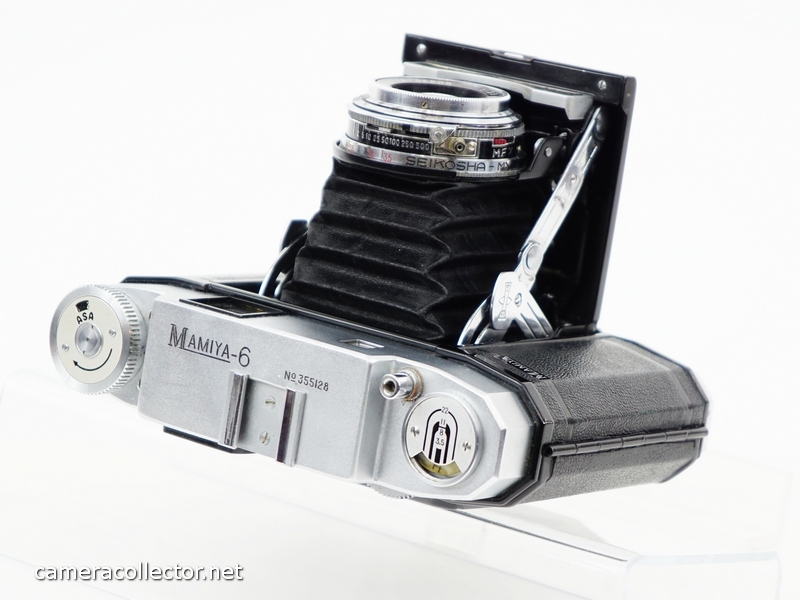Mamiya Six family
Mamiya Six family model list
The late 1940s and the 1950s saw most Japanese camera makers offering cookie-cutter 120 klapp cameras, most named Six or Semi in one way or another. Some makers survived a further decade or two, a few have reached the next century, while most just faded away. These models were made for the local market, where ‘local’ primarily refers to the half a million or so GI contingent stationed In Japan. To cater to the gaijin ears, the makers were highly creative. Models named Balm, Please, Angel, Pluto, Rosen, Center, Calm, Clover, and Elbow show how eager they were. A list of 313 models is here; sure, there are many more. The 35mm format was yet to take off, and the other popular format in Japan was the 127, called ‘Vest’ or ‘Best,’ which yielded fewer models.
The Mamiya Six was their entry into this, with a line of cameras made till 1958, with the Six Automatic models closing the parade. Most Mamiya Six camera models were of the same principle, with minor differences in operation and appearance and lens/shutter combination. Most used 6×6 format, with a few added 4.5×6, as seen in the table below.
The Mamiya Sixes stood out with the focusing mode. Instead of moving the lens back and fro, the focal plane moves. A neat, although confusing, system. The two ‘Auto’ models added shutter cocking with film winding, as much ‘Auto’ as it could be at that time. For the one-time user, holding the camera is odd; the winder is on the left while the focusing dial is on the right, kind of Prominent style.
The three early models were identified by the three windows on the front and by marking ‘Six’ in words. Later models carried two windows and were marked with the number ‘6’. Note that this model has nothing to do with the 1989 Mamiya Six other than sharing a name. Regarding names, I note that in Japan, the models were referred to as Mamiyax, and I think that individual models carried other designations. Or perhaps Google translate took some liberty.
I don’t know how many Mamiya had sold and in which market, but many still change hands these days, and the various models hold value. The most popular seem to be the Six IV and the Auto I. As a collector, I recommend having one model of this line on the shelf. I have three, as listed below.
The earliest of my lot is a Mamiya Six IV, a 1947 crop I got on Kijiji, the local online ads site. It looked terrible in the pics and worse in presence. The previous owner reskinned it with material salvaged from a fake Louis Vuitton bag. It could be a neat idea but it was poorly done. I re-covered it with genuine leather, and regrettably still looks awful.
The camera features two viewer windows with a protruding frame. This frame was dropped in later models, so the window was flush with the body. The top fascia is nicely stylized and rounded rather than the square appearance of the newer versions. The front pops open with a press of a button at the middle top. As mentioned, the winding button is on the left, with a film reminder within it and a frame counter around it. There is a red lens at the back to show the exposure number, but there is also a stop mechanism to eliminate double exposure. A lever at the back can override it to allow a double exposure. The viewer is on the small size. Focusing is via a dial that falls under the right thumb and is easy to operate.
Cocking the shutter is by a lever over the lens assembly and is released by a trigger at the top. On most klapp cameras of that era, the shutter release was by a tiny lever by the cocking lever, resulting in finger acrobatics, while here it is easier. The lens is a Zuiko variant, 3.5/75, common to all the Mamiya Six models. There is a removable sliding metal sheet in lieu of a permanent pressure plate.
The next is a Mamiya Six K2 of 1956. Here they offered 6×6 and 4.5×6 image sizes. The stop mechanism eliminating double exposure is gone; instead, there is an elaborate red lens combination. At the back, two windows marked 16 and 12, but only one can be exposed via the slider. The other is blocked. Changing that requires pulling a slide mounted inside the back cover so only the appropriate marking will be shown. A removable pressure plate covers the bay, this time hinged rather than sliding. A tiny lever holds that the bottom part moves; note that the lever’s hinge is on top. There is no mask to set the required image size. A barely visible slider between the front windows crops the viewer to match the image size.
The last of my lot is a Mamiya Six Automat II, made in 1958. It is also the latest model of this line. It looks very similar to the K2, but offers one image size, 6×6. The ‘Auto’ here means that the winding knob also cocks the shutter, a far cry from the ‘Auto’ definition of decades to come.
A permanent feature is a rampart-like cover just under the lens’ front. It is there for a reason, not as a design feature. When cocking, a Rube Goldberg-style set of levers and dials joyfully operate to convey the movement from the winder to the shutter. The winder seems to turn forever, I guess there is an extra reduction gear inside to ease the winding process.
The pressure plate is back to the early sliding style. For good measure, the red lens is in place. Wonder why they didn’t add a counter within the winder. The viewer here is much larger with parallax marks.
Size-wise, this model is similar to its predecessors but about 100 gr heavier than the K2.
As far as I can figure, the Automat 2 has a front nameplate. Other than that not sure what differs.
Mamiya Six quick reference chart:
| Model | Mamiya Six K |
| Year | 1954 |
| Format | 4.5×6 + 6×6 |
| Value | Value |
| Shutter | Copal |
| Speeds | B, 1-300 |
| Lens | 75/3.5 |
| Lens make | Sekor |
| Timer | Yes |
| Sync | |
| Sync port | Yes |
| Sync speed | 300 |
| Weight | 820 |
| Initial cost, Yen | 18 |
Mamiya Six K2
Mamiya Six Auto 2
Mamiya Six IV


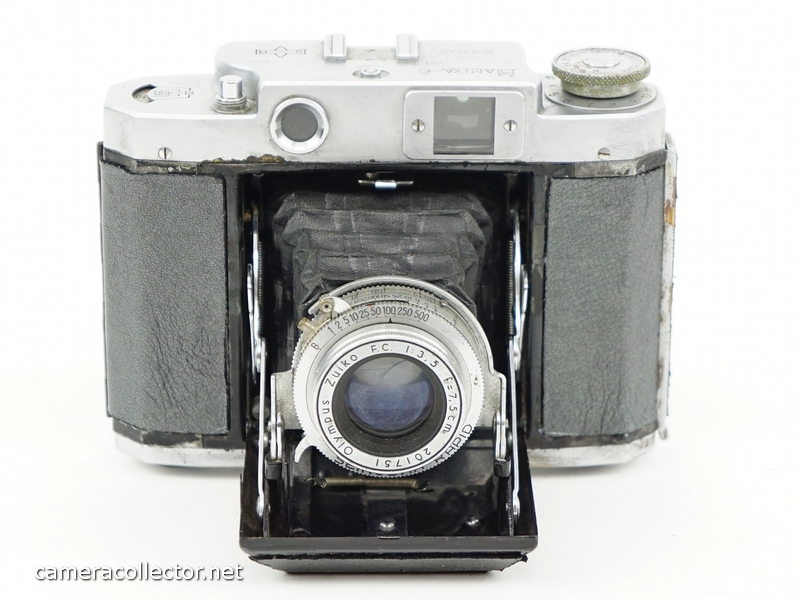







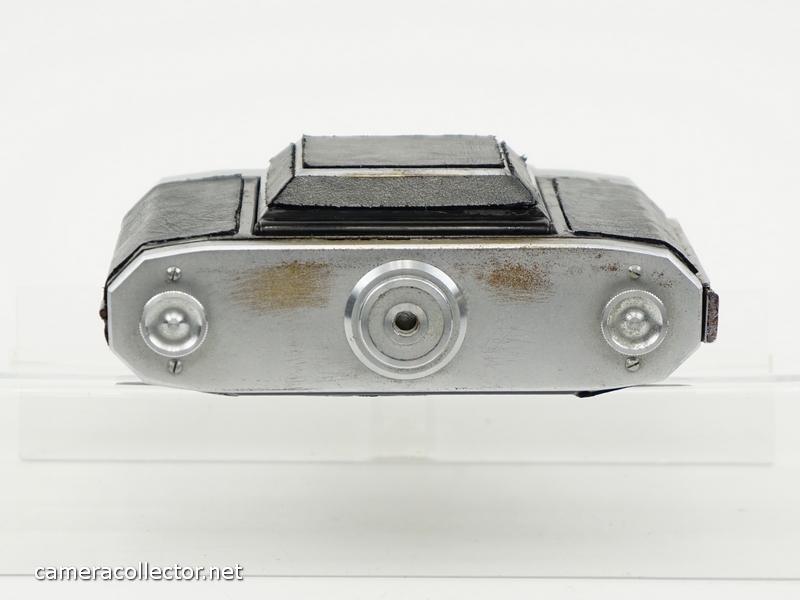
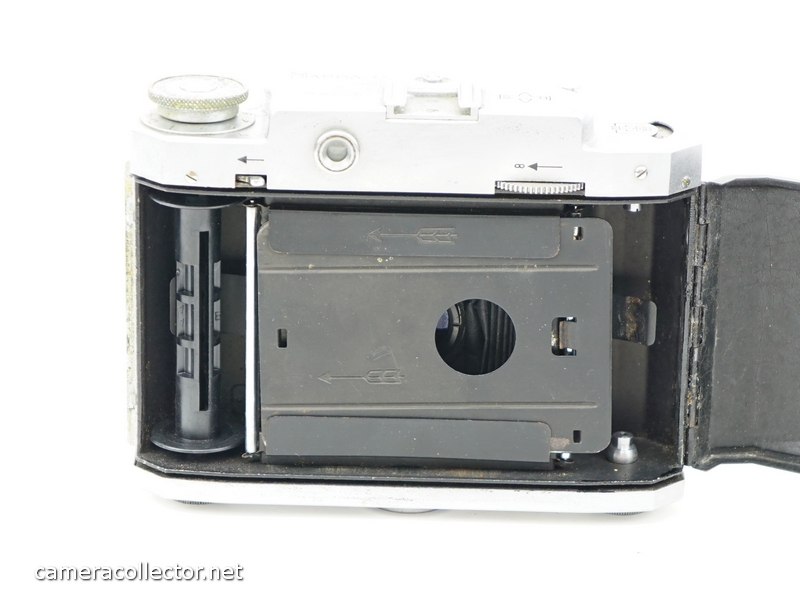
Mamiya Six K2







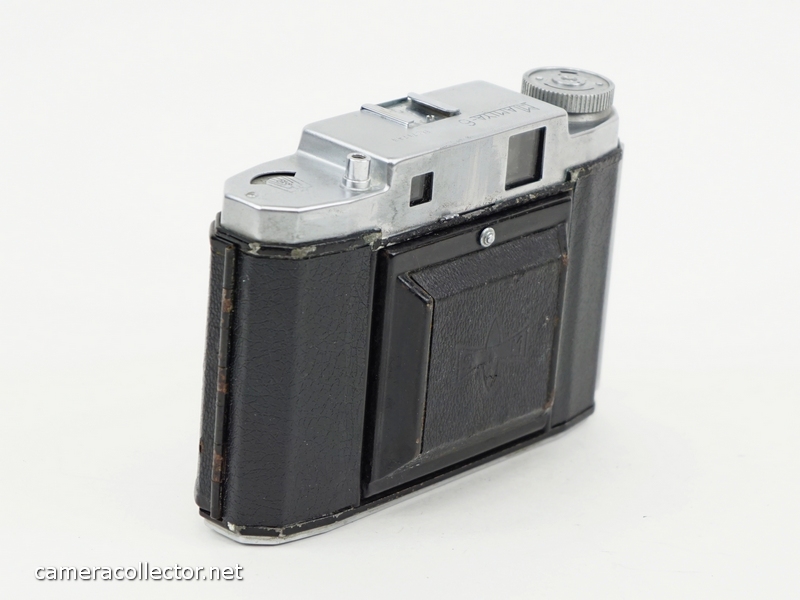




Mamiya Six Automat II





